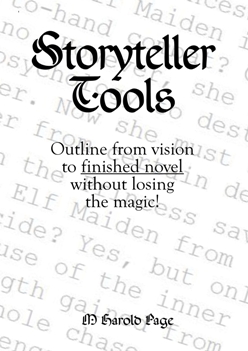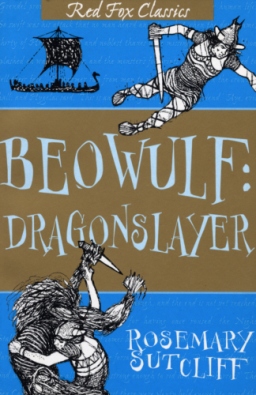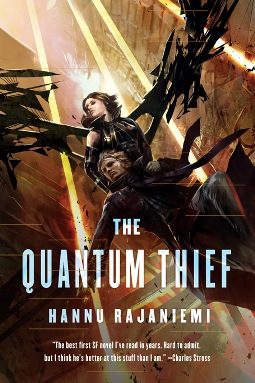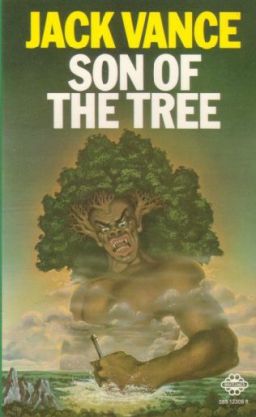The Joy of Outlining

My name is M Harold Page and I’m an outliner!
Some creative writing forums greet this kind of statement with all the dismay of children being reminded there’s homework to do:
Only writing in flow — “pantsing” — is creative! Outlining is dull, hard work and mechanistic! Etc. Etc. (Oh the angst! I am blocked again…)
The “hard work” whinge just tells me people don’t know how to type. Writers type. If you can’t touch type, go learn. Touch typing liberates you to treat your text as disposable — to casually “murder your darlings” — takes the physical grind out of writing — which has to be one of the real causes of the dreaded “Resistance” — and enables you to use outlining tools without begrudging every keystroke.
As for the creativity. Let me show not tell.

But first the backstory.
See, in common with many knowledge workers, I’ve spent years stuck in jobs where I was working at 50%-80% intellectual capacity. At one point, I was so bored that only the aches and pains from an evening of fencing and drinking could make the tasks sufficiently challenging.
The thing about these jobs is that they give you more time to think about writing than to actually write.
When bored at work, it’s easy to drop into a site like this, or to a good writing forum like Absolute Write. Almost as easy to knock out a quick blog entry to clarify your ideas. However, it is all but impossible to settle down to drafting a novel on the company time (not that I have tried to do this, of course).
The end result was that, like Joseph Pilates stuck in a prison cell, I developed my own system. Pilates invented.. um… Pilates. Less ambitiously, I developed a set of formalised outlining tools (which is how I managed to write four books in fourteen months).

One of these tools is what I call a QABN (pronounced “Cabin”), Question-Answer-But-Now.
The QABN is great tool for nailing down the arc of a scene, an act, or even an entire novel. For example, “Can Beowulf kill Grendel? Yes, but Grendel’s mother turns up and eats some people. Now he must go after her…”
On the face of it, since it’s formalised, the QABN is just the kind of mechanistic approach to storytelling that the pantsing advocates decry. However, all stories ask a question, answer it with a twist, and point to implications. It is the question, answer and implications that are interesting. The rest merely supports that primal structure. The QABN just lets us play with it unhindered by the need to wrestle words.
The resulting experience can be exhilaratingly creative.
Here’s what happened when my friend Hannu Rajaniemi (yes we used to workshop together — living in Edinburgh can be like attending a 365-day SF convention) tweeted about my outlining book, and then one of his fans started a game of QABN consequences (tweets quoted with permission and tidied up by me):
Hannu: An excellent ebook on outlining fiction by @mharoldpage:http://goo.gl/obDpK3 – I’ve found Martin’s insights very helpful over the years!
Henri: Great stuff! Now we just need someone to start a Twitter stream of QABNs
Me: Can the penniless writer afford a new sword? Yes, but…
Henri: Yes, but the sword is bound to a daemon that knows one of the Hidden Truths. Now…
Me: …he must save the princess from being consumed by cyber trolls!

I admit it, at that point I was not taking the exchange very seriously. However, Henri came back with a concept that was slightly Jack Vance with a dose of Clark Ashton Smith and I went for the lure:
Henri: Can the royal gardener save The Tree from the locusts?
Me: Yes but, only by becoming One with the Tree….
Henri: Now she must let go of her love to the Grand Vizier.
Me: Can the Royal Gardner let go of her love for the Grand Vizier? No, but he rejects her. Now she must be avenged!
Henri added another layer:
Henri: Can the Grand Vizier hide how he manipulated the Royal Gardener to sacrifice herself? Yes, except a spy-in-training finds out. Now the junior spy (protagonist?) must go into hiding to survive with the info.
Me: Can the spy go into hiding? Yes, but the zeppelin she stows away on is hijacked by airship pirates! Now…
Henri: Now she must befriend the pirates to turn them into allies against the cabal conspiring to take over the court.
It was as if the QABN format was the bass player laying out a Blues riff so Henri and I could jam with our guitars! Not only were we having great fun, we were also generating something that felt like a book we’d both like to read.
Then Hannu — who combines being a lyrical far-future SF writer with a job that belongs in Hard Science Fiction — dived in long enough to take us a different direction:
Hannu (answering the Spy Hiding question): No, but it is just the first sign of the deep wound in the world caused by the King’s madness. Now …
Henri: Now she must find a Mind Tree seed to heal the world
Me: Can she find the Mindtree seed? Yes, but the resulting Mind Tree turns everybody else into mindless zombies. Now…
Henri: Now she must find the automaton that was the Grand Vizier to learn the secret of the Locust Queen
Me: Can she find the automaton? Yes, but she previously blew him up (the Mind Tree suppressed her memory of this). Now…
What fed this fevered creativity was the way the format supports vague high-concept ideas like Grand Vizier, Tree, Mind Tree, Locust Queen, and an Automaton. We didn’t know what these were, or how a Mind Tree seed would “heal the world”. It didn’t matter. They were like writing prompts or those storytelling cards, except they were popping out of our own unconscious and then fueling yet more wild ideas. If either of us sat down to write this story, we’d have to interrogate and define these, which itself would be a creative process.
However, at this point our heads were spinning with ideas and we both quit the game and ran off to work on our own writing.
Though my current contracts tie me to the real world, this process is more or less how I develop my stories: a round of free-flowing but structured creativity. The next step is to wrestle the QABNs into some kind of whole. After that, everything is easy. The story outlines itself, the prose is fun to write, and I can do all this in flow with minimal revision.
It’s possible that I’m missing out on all the artistic angst and the thrill of powering through writer’s block. However — frankly — I’m having too much fun to care.
M Harold Page (www.mharoldpage.com) is a Scottish-based writer and swordsman with several franchise books on Amazon. His creative writing handbook, Storyteller Tools is now available on Amazon.
Great post. I’m still a fledgling writer and I’ve pantsed two novels and ended up with a train wrecks. I’ve been successful with my short stories but I notice that they are “outlined” and therefore there is less revision. Making the transition to novels seemed a near impossible task. My third novel I decided to outline and there are fewer plot snarls and I think the pace of the story doesn’t drag like in my previous attempts. I’m convinced that it works and the advice of numerous writers say that the way to go is outline and I think they’ve been proved correct–at least for me it has helped in the process.
Intriguing. How do you mean
>I notice that they are “outlined”
It’s certainly true that short stories are short enough that you can hold them in your head and thus work with their outline mentally.
Sometimes when I type stuff in I’m on the fly and the thoughts come out half baked. Yes, I mean that short stories are short enough to work out mental outlines. Going from point to point makes a short story easier to move through. Most of my stories were 20 pages or less and when I pushed past the 40 mark I wrote a brief outline and it was just as easy as a shorter one. When I wrote a novel I knew what the beginning and the end was but I couldn’t work my way through it. When I finally finished it was horrible. I learned a great deal by the exercise but I was frustrated because I want to do professional level work. It wasn’t. I decided to switch to an outline for the next novel and it was much better. I didn’t get fifty pages into the story and realize that I was in a rabbit hole going nowhere. At the end of the novel I learned a great deal and I was much closer to professional work than before. I think I’m close now. I think I’ll break through someday. Outlines are not something I consider extra work anymore. For me it was a paradigm shift.
My experience as well, except I didn’t really pass through the short story phase and had to learn plotting while trying to write novels.
For me, the trick is that the outline has to read like a story.
EDIT: May I quote your posts on my blog?
Your QABN system sounds really cool, I mkght have to use it in discussions with in my circle of friends.
We often come up with wild little narratives between us and they’re usually incredibly stupid. I think the last one involved Brian blessed giving birth to a polar bear in a fit of rage after losing out on an oscar. He tgen slaughters the ceremonies attendants, grafts a broadsword to his head, rides off into the night and spends the rest of his days decapacitating nuns in the countryside, with his polarbear son, Alfred.
Yes, it’s great fun. You might also find the “…but…” system useful.